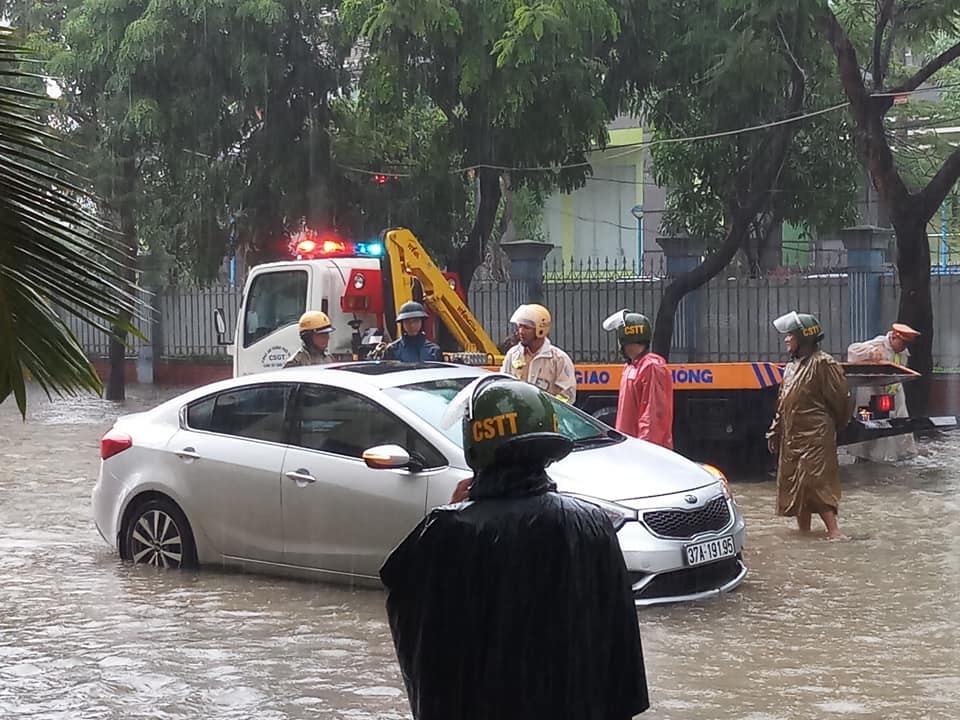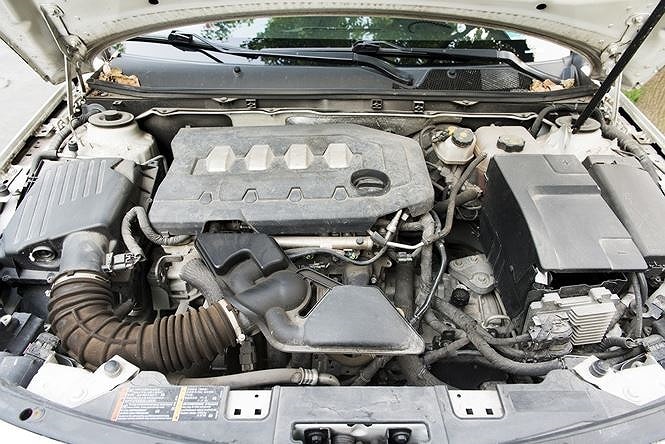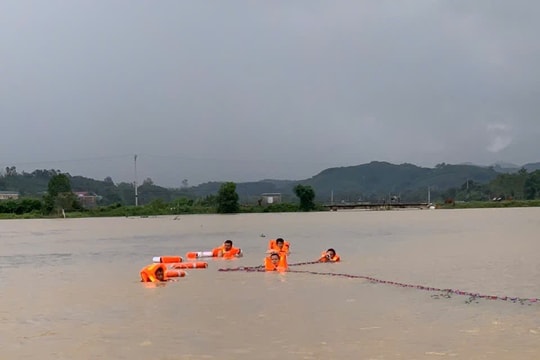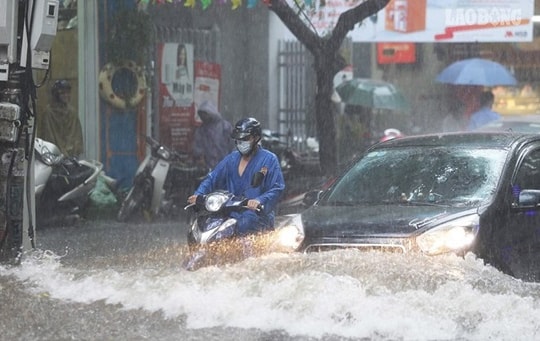How to handle when car goes through flooded road?
Rain and storms are always dangerous enemies for cars, especially in rainy countries like Vietnam. So, when encountering flooded roads, what should drivers do to avoid car breakdown?
Water entering the car can lead to many bad consequences such as: rusting metal parts, causing electrical components to short circuit... and the most dangerous is that water hammer can occur if water flows into the cylinder's combustion chamber. Therefore, drivers need to be very careful when going through these sections.flooded roads and should be handled properly.
 |
| A flooded car in Vinh City on the morning of September 3. Photo by Quynh Trang |
When encountering flooded roads
Go slow and steady
If driving a manual transmission car, the driver should shift to low gears to drive and keep the accelerator steady; and with an automatic transmission car, shift to S mode to drive and accelerate slowly and limit sudden acceleration.
This is very necessary when driving on flooded roads, accelerating quickly and then braking suddenly will cause the water to vibrate strongly, causing water to flood into the intake through the air filter, and then enter the combustion chamber, causing dangerous hydrostatic shock.
Stop the car completely on a flooded road
Driving slowly will help drivers observe the road better, and above all, can help recognize deep flooded sections. Here, the safest solution is to stop the car.
Different types of vehicles will have different water levels to consider stopping in. For example, sedans and hatchbacks will have to stop in shallower water than SUVs and pickup trucks.
In case the car is flooded into the engine compartment causing the engine to stall, the driver needs to call for a rescue to take the car to a repair station for the best solution, and should not try to start the engine. When trying to start the engine, water can flood into the combustion chamber and have no way out; continuous starting will lead to the phenomenon of bending or breaking the connecting rod, causing engine damage.
Handling water entering the interior compartment
When driving on a flooded road, you should completely close the doors to avoid water from entering the cabin. If the water has entered the car but not much, the driver can drive home but should remove the negative battery terminal and leave it overnight. The next day, you can call a tow truck to take the car to a garage to handle the interior.
If water is deep inside the cabin, the driver should call for help immediately.
| Video tutorials on how to drive through flooded roads |
Check after driving through flooded roads
Even if you pay attention and handle the situation well when crossing flooded roads, after wading through the water, drivers should still check some parts of the car because they may not function properly as before.
First, check the brakes, as they may be slipping and losing grip. It is best to pump the brake pedal a few times before proceeding, this will help the brake pads and discs/drums return to normal operation.
Next, the driver should pay attention to the engine operation. Try starting the engine on the spot, pay attention to whether the engine operates more strongly or suddenly dies with strange noises. If there is anything unusual, stop the car in a dry place and check the following: the dipstick to see if the engine oil has water in it; check the air filter to see if it is wet.
 |
After driving through a flooded road, drivers should check engine operation. |
The electrical system also needs attention. Check components such as fuses, control boxes, and lights for damage. If there is a problem, disconnect the battery and call a mechanic to check it out.
Finally, don’t forget to check the spare tire area. This is an area that many people forget after their car “wades through water” and even rarely pay attention to. If water gets into this area, dry it immediately. The metal parts of the spare tire and other tools will gradually rust after contact with water.



